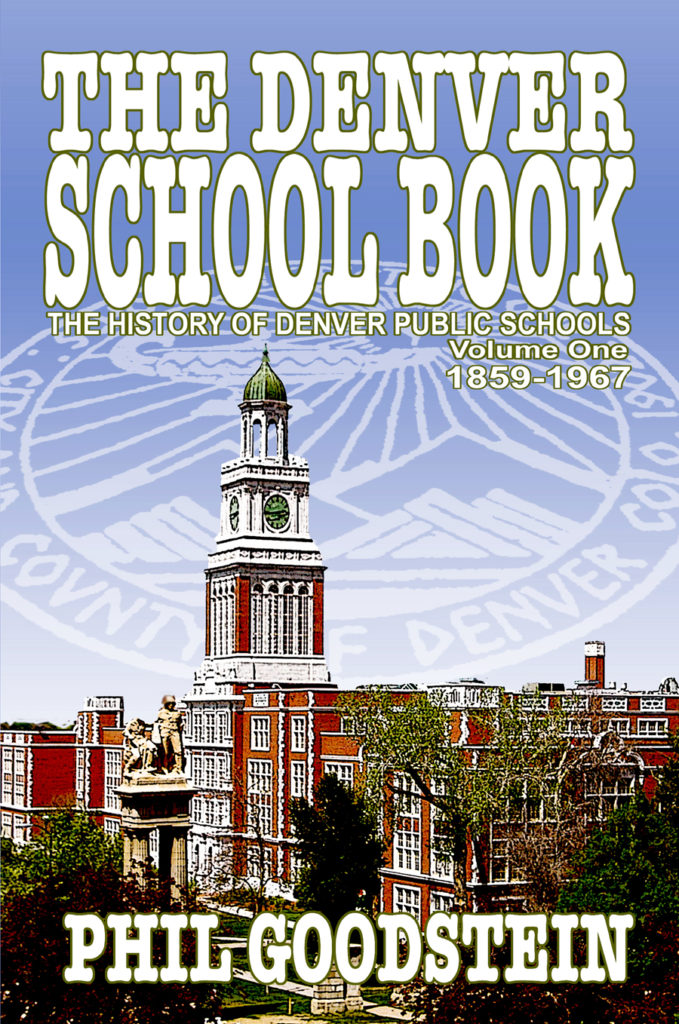
Tours sponsored by Jessica Abegg: Please see below for a list of tours sponsored by Jessica Abegg. Tickets are Jessica’s gift to you! Participant’s may tip the tour guide as they see fit.
Saturday, April 23: North Denver, 12:00 noon–1:00 pm
Meet at the pavilion/pyramid in Columbus Park, West. 38th Avenue between Navajo and Osage streets. (Navajo is the “N” street in the alphabet west of Broadway; it is about 16 blocks east of Federal Boulevard.) This is a free tour. Participants may tip the tour guide as they see fit.
Sunday May 15th 12:00 pm Platt Park: Gather in front of the Decker Library at the southwest corner of South Logan Street and Florida Avenue. (Logan is four blocks east of Broadway. Florida is four blocks south of Mississippi Avenue and four blocks north of Evans Avenue.)
Tuesday June 21st 6:00 pm W Highlands: Meet in front of Edison School, on the west side of Quitman Street between West 33rd and West 35th avenues. (Quitman Street is five blocks west of Lowell Boulevard and 11 blocks east of Sheridan Boulevard.
Monday July 18th 6:00 pm University Park
Thursday, August 25th 6:00 pm North Capitol Hill
Saturday September 17th 12:00 pm Curtis Park
Friday October 14th 6:30 pm Ghosts of Capitol Hill
Other Phil Goodstein Tours: Want more of Phil’s amazing tours? See below for a list of other great tours that he will be hosting this year!
Friday, April 1: The Sunnyside of Denver, 5:00 pm–6:00 pm
For April Fools Day, there will be an informal talk about all the bright things in Denver. Naturally, it meets in the Sunnyside Neighborhood, at the fenced-off artificial flower garden in Chaffee Park along the west side of Tejon Street near West 44th Avenue. This is a free event. Participants can tip the tour guide if they wish.
Saturday, April 9: Ghost Walk, 7:00 pm–9:00 pm
The focus is on the sex, sleaze, spooks, and scandals near Colfax and the Capitol. Learn about the changing nature of some haunted houses while we visit the specter of Baby Doe Tabor, find out why “Our ghosts now rest with the IRS,” and whether somebody or something from another world haunts mansions along Pennsylvania Street. Meet at the statue of the Indian on the east lawn of the Capitol.. It is along the west side of Grant Street between 14th and Colfax avenues. The cost is $20.
Saturday, April 16: Country Club Neighborhood, 11:00 –1:00 pm
Meet in front of Bromwell School, Fourth Avenue and Columbine Street. (Columbine is one block east of Josephine Street. Fourth Avenue does not cut through between Josephine and Columbine.) The cost is $20.
Sunday, May 1: Barnum, noon–1:00 pm
Gather in front of Barnum School at the southwest corner of First Avenue and Hook Street. (Hooker is the “H” street in the alphabet west of Federal Boulevard). This is a free tour. Participants can tip the guide as they wish.
Saturday, May 7: The Ghosts of Cheesman Park, 11:00 am–1:00pm
Meet at the entrance to the park at Ninth Avenue, half a block west of Race Street. Race is three blocks west of York Street. This part of the park has been closed to traffic during the outbreak of the coronavirus. Street parking is usually available directly to the east of the park. The cost is $20.00.
Sunday, May 22: Streetcar City, 1:00 pm–2:00 pm
This is a lecture on the evolution of public transportation in Denver from horsecars through trolleys to RTD to light rail and beyond. It is at the Forney Museum, 4303 Brighton Boulevard. Admission, including the talk, is $10.
Saturday, May 28: A Bicycle Tour of Park Hill, 11:00 am–1:00 pm
Explore Denver on two wheels. This ride explores central and eastern Park Hill, including the old Holly Shopping center, what was once Colorado Woman’s College, and Downington. It gathers in front of Smiley Middle School on the east side of Holly Street between 25th and 26th avenues. The cost is $20.
Saturday, June 4: Denver History Night, 5:30 pm–7:00 pm
This is a free, informal discussion of Denver history and politics. It gathers at Enzo’s, 3424 Colfax (between Cook and Madison.)
Tuesday, June 7: South of the Country Club, 6:00 pm–8:00 pm
Meet in front of Steele School, along the east side of the south Marion Street Parkway between Alameda and Dakota avenues. (Marion Street is one block east of Downing Street.) The cost is $20.
Saturday, June 11: The Ups and Downs of the Platte River, 1:00 pm–2:00 pm
The Platte River has repeatedly flooded. How it has shaped the city, including the legacy of the 1965 flood, is the subject of this free-wheeling lecture. It is at the Forney Museum, 4303 Brighton Boulevard. Admission, including the talk, is $10.
Tuesday, June 14: Montclair, 6:00 pm–8:00 pm
Meet in front of the Montclair Community Building at the southwest corner of 12th Avenue and Oneida Street. (Oneida is four blocks east of Monaco Street Parkway and four blocks west of Quebec Street.) The cost is $20.
Saturday, June 18: Ghost Walk, 7:00 pm–9:00 pm
Meet in front of the statue of the Indian on the east lawn of the Capitol. This is along Grant Street between 14th and Colfax avenues. The cost is $20.
Tuesday, June 28: West Denver, 6:00 pm–8:00 pm
Meet in front of West High School on the west side of Elati Street between West Ninth and West 11th avenues. (Elati is five blocks west of Broadway. It is one-way southbound from West 11th Avenue where it is the first block west of Speer Boulevard.) The cost is $20.00.
Phil’s Books
Author Phil Goodstein is a graduate of Denver Public Schools. There he found himself bored in class while he sought to change the world. Over the last 30 years, he has sought to probe how Denver operates and the character of the community. Some of his previous books include Denver from the Bottom Up, In the Shadow of the Klan, and the Ghosts of Denver: Capitol Hill. The Denver School Book is essential reading to anyone who wants to know about the city or wishes to probe what public education is all about.
Phil’s NEW book: The Denver That Is No More: The Story of the City’s Demolished Landmarks
Denver has continually changed since its origins during the Pikes Peak gold rush of 1858–59. During the city’s 160-plus years, impressive structures have come and gone. Landmarks of which the citizenry were once proud have sometimes disappeared in a generation. Frustrated by the endless destruction of the city’s heritage in the name of “progress” and economic growth, activists got the city to create the Denver Landmark Preservation Commission in 1967. On the heels of this, Historic Denver emerged in 1970 to save the Molly Brown House. Since then, the obliteration of landmarks has continued, but usually not without a fight.
All of these factors add up to a new, lively, colorful, well-illustrated history of Denver by the city’s leading scholar, Phil Goodstein, The Denver That Is No More. Starting with the origins of the settlement, the book examines both the pioneer endeavors and their impact on the Indians. The study emphasizes the landmarks of Black Denver, the role of women, and the way everyday wage-earners have been central to the shaping of the Mile High City.
Chapters include a discussion of the ever-changing character and definition of downtown and the drastic impact of urban renewal. The study is quite hostile to the Denver Urban Renewal Authority, branding it the agency for “Destroying Urban Residential Areas.” In the process, the work peeks at Auraria, lost churches, and the many vanished movie houses of the community.
Other chapters deal with hospitals, schools, industry, and sports. The work highlights the disappeared mansions that were once part and parcel of Capitol Hill. It probes the South Broadway Miracle Mile and the end of such landmarks of the 1960s as Celebrity Lanes and the Cooper Cinerama on South Colorado Boulevard. The Denver That Is NoMore brings the story into the 21st century, looking at the recent razing of the distinctive glass home of Ginny Williams in Cranmer Park.
Author Phil Goodstein is a Denver native. He has probed all aspects of the city in more than 25 volumes. In some ways, The Denver That Is No More is a synthetic work, weaving together points from his previous volumes. Here and there, it uses vintage illustrations that have appeared in his past books. The study also includes a good deal of contemporary photos. The author laments he has taken some of the shots of buildings which have disappeared since the beginning of the new century. Goodstein argues that by understanding what the city has been, residents can grasp what it is and how to shape it to assure a flourishing future.

Phil Goodstein, The Denver School Book: The History of Denver Public Schools, 1859–1967. Denver: New Social Publications, 2019. ISBN 0–9860748–4–5/978–0–9860748–4–4. vi + 490 pp. Illustrations. Index. $24.95.
Denver Public Schools (DPS) have been in the news lately. A strike recently convulsed the district, shortly after it had hired a new superintendent. But the schools are always in the news. From the time of the Pikes Peak gold rush in 1859, residents have insisted that schools are at the heart of the city’s vitality. The school system has reflected the hopes, passions, and fears of the community.
All of this comes across in a fascinating survey of Mile High public education, The Denver School Book, 1859–1967, by veteran historian Phil Goodstein. It traces the origins of Mile High schools to the arrival of the city’s first schoolmaster, Owen J. Goldrick, in 1859. From there it traces how Denver was soon home of numerous different school districts. This eventually led to their consolidation in 1902 as District #1 of Denver Public Schools of the City and County of Denver.
This is only the beginning of this sweeping, well-illustrated volume. It explores superintendents, members of the board of education, and the district’s facilities. The Denver School Book emphasizes that DPS once took immense pride in the architectural distinction of its schoolhouses. The study further explores how the Chamber of Commerce, working with the PTA, essentially gained control of the school board in 1917, dominating it for the next 50 years.
The first volume of a planned trilogy, The Denver School Book observes 1967 was a crucial turning point in the operations of District #1. That year Kenneth K. Oberholtzer retired after 20 years as superintendent. Under him, DPS had the reputation of being a model district. Even so, by the early 1960s tensions grew, especially on whether DPS was operating an illegally segregated, dual system whereby it had one set of schools for whites and another for blacks. This exploded in 1969 in a federal lawsuit challenging District #1’s racial policies. That subject will be the focus on volume two, The Denver School Busing Wars, 1967–1995. Volume three will bring the story into the end of the second decade of the 21st century. In passing, the undertaking examines the character of public education as a whole and the relationship between the schools and the community.
Phil’s Other Books:
Phil Goodstein (303)333-1095










